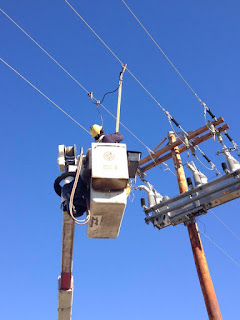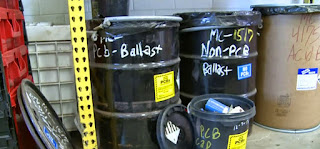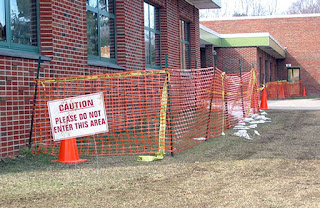Victims in horrific fatal crash identified as Easton man, 58, his son and son's girlfriend, both 17
Friday Posted Dec 30, 2016 at 7:36 PM Updated at 11:51 AM
Two sport utility vehicles collided head-on Friday night at a dangerous curve on Route 123 in Easton. Two people were pronounced dead at the scene and another died overnight at a Boston hospital. By Cody Shepard
The Enterprise
EASTON, Mass. - Police have identified the three victims of horrific fatal crash Friday evening.
Two sport utility vehicles collided head-on Friday night at a dangerous curve on Route 123. Two people were pronounced dead at the scene and another died overnight at a Boston hospital, all as a result of the injuries they sustained in the crash.
On Saturday morning Easton Police identified the victims as William R. Fleming, 58, of Easton, his son Robert W. Fleming, 17, also of Easton, and Kayleigh Desrosiers, 17, of Halifax.
Roberts Fleming was a student at Oliver Ames High School in Easton, as were three of his siblings who since graduated, and Desrosiers attended Silver Lake Regional High in Kingston.
Oliver Ames Principal Wes Paul sent a letter out Saturday to students, families and teachers Saturday which read in part:
"It is with a heavy heart that I share with you the sad news that one of our classmates, Robert Fleming, was killed in a car accident last night. I have spoken with Robert's mother expressing our collective condolences for her losses and offered our assistance... Robert is survived by his mother Deena, and siblings Joseph Gizzi OA Class of 2011, Kimberly Newman OA Class of 2012, and Amy Maliff OA Class of 2013."
Paul added that various forms of grief counseling will be available at the school Saturday until 3 p.m.
Police said a Chevrolet HHR crossed the center line and slammed into a Toyota Sequoia SUV shortly after 6 p.m. on Depot Street, Route 123, at an S-curve west of the Cross Street intersection.
The vehicles' front ends were completely caved in. One victim was injured, lying on the ground outside the car, another was unconscious inside and a nurse was performing CPR as witnesses looked on in horror.
The man driving the Chevrolet, William Fleming, and the female rear-seat passenger, Desrosiers, died at the scene, Fire Chief Kevin Partridge told The Enterprise.
A man in the back seat, Robert Fleming, was taken by ambulance to Good Samaritan Medical Center in Brockton and flown to a Boston hospital with life-threatening injuries, Partridge said. He later died.
"Unfortunately, the third passenger succumbed to his injuries last night at the hospital," Police Chief Gary Sullivan told The Enterprise Saturday morning.
The driver of the black Toyota was taken by ambulance to a Brockton hospital with non-life-threatening injuries, Partridge said. She was alone in the vehicle.
A family member identified the victims in the Chevrolet as her husband, her son and her son's girlfriend.T he family lives in South Easton, about a mile from the crash scene.
The first police officer and engine arrived simultaneously at the scene at 8:14 p.m. The officer found a nurse performing CPR on one of the victims and immediately requested more help for what he thought might be a fatal crash.
After the collision, the Chevrolet was over the center line in the westbound lane, facing east. The Sequoia appeared to have been driving west toward the Foundry Street intersection and was cleanly between the center yellow and right white travel lines.
Partridge said it appears initially that none of the three people inside the Chevy were wearing seat belts.
"It appears they were unrestrained," he told The Enterprise at the scene late Friday night. "As you can see, in that car there, the passenger compartment is pretty well intact. I can't stress enough, people need to wear their seat belts, that's what they're designed for."
Partridge said his firefighters did the best they could to treat the victims. They had to use hydraulic rescue tools to remove William Fleming from the Chevy, but he died at the scene.
"As you can imagine, it was a very hectic scene at first," Partridge said. "Just like everybody else, it's an emotional thing to deal with. They're (firefighters) trained to do their job, they do their job, but everyone's affected by it differently. We talk to the guys, see how everyone's doing, make sure everyone's doing OK. Over time, in your career, you have many of these. It's like an accumulative effect on you."
Investigators remained on scene for four hours. The cause of the crash is being investigated by Easton police and a state police accident reconstruction unit.













































